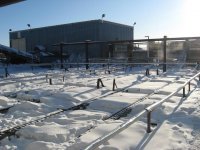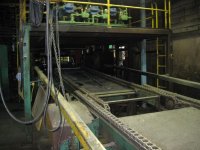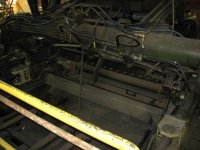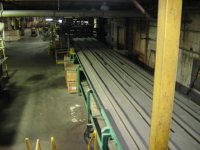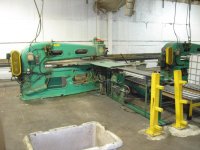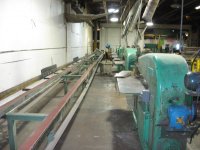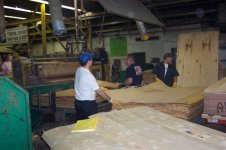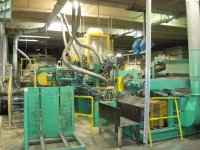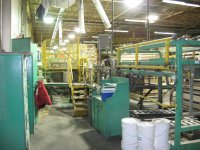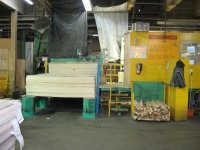NorthernRedneck
Well-known member
Not sure where to put this but here goes.........
I work in a plywood mill.(or, used to anyways after this week) We made high end plywood used for custom cabinetry and furniture.
The first step in making plywood is to debark the peelers. Here's a video showing this process. The videos are not from the mill I work at but the process is very similar.
[ame="http://www.youtube.com/watch?v=m3LM-sg1Oy8&feature=related"]YouTube - Morbark Debarkers and Peelers[/ame]
After the logs are debarked, they fall into ponds and float down to Jack ladders that bring them up onto a chain system.
first picture is looking towards the debarker building. We have 8 ponds in which the debarked logs float down.
Second picture is of the jackladders that carry the logs from the ponds and place them on a chain/conveyor system.
The logs are emersed in water to get moisture into the wood to make it easier to peel afterwards.
I work in a plywood mill.(or, used to anyways after this week) We made high end plywood used for custom cabinetry and furniture.
The first step in making plywood is to debark the peelers. Here's a video showing this process. The videos are not from the mill I work at but the process is very similar.
[ame="http://www.youtube.com/watch?v=m3LM-sg1Oy8&feature=related"]YouTube - Morbark Debarkers and Peelers[/ame]
After the logs are debarked, they fall into ponds and float down to Jack ladders that bring them up onto a chain system.
first picture is looking towards the debarker building. We have 8 ponds in which the debarked logs float down.
Second picture is of the jackladders that carry the logs from the ponds and place them on a chain/conveyor system.
The logs are emersed in water to get moisture into the wood to make it easier to peel afterwards.


